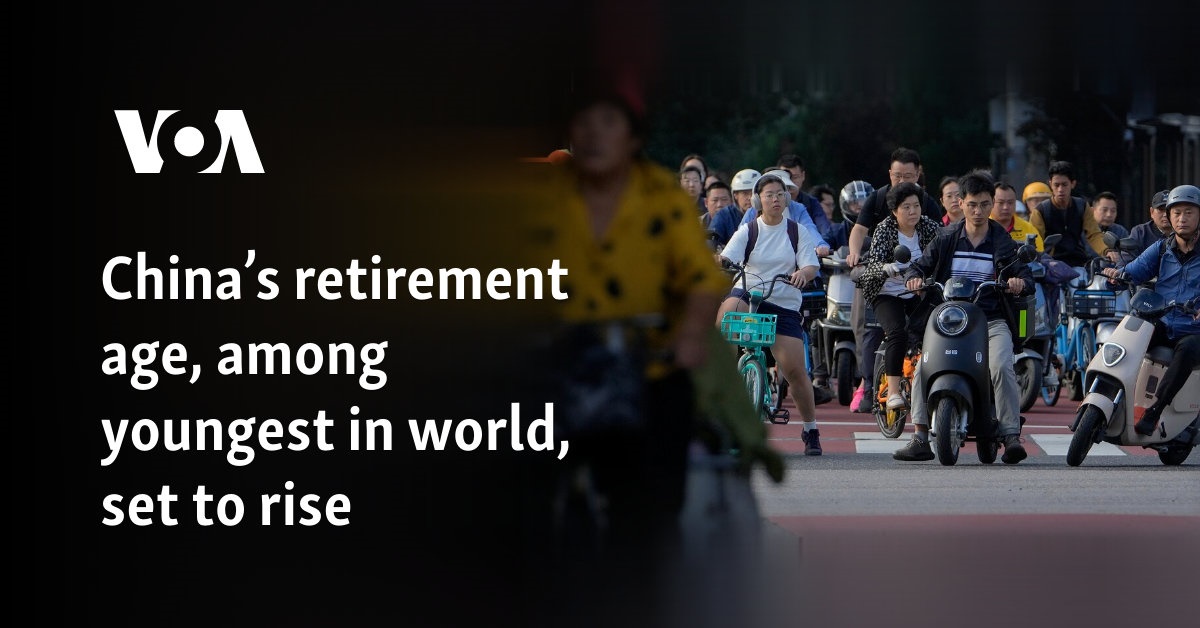Starting next year, China will raise the retirement age for workers. It is currently one of the lowest among the world’s major economies. The country wants to counteract the shrinking population and the aging of the workforce.
The Standing Committee of the National People’s Congress, the country’s legislative body, passed the new policy on Friday after suddenly announcing earlier in the week that it would review the measure, state broadcaster CCTV said.
The policy change will be implemented over a period of 15 years. The retirement age will be raised to 63 for men and to 55 or 58 for women, depending on the occupation. The current retirement age is 60 for men in blue-collar occupations, 50 for women and 55 for women in white-collar occupations.
“More and more people are reaching retirement age, and so pension funds are under a lot of pressure. So I think now is the time to take serious action,” says Xiujian Peng, a senior researcher at Australia’s Victoria University who studies the Chinese population and its links to the economy.
The previous retirement age was set in the 1950s, when life expectancy was only about 40 years, Peng said.
According to an announcement by the Chinese parliament, the regulation will be implemented from January. The change will come into effect gradually based on people’s birth dates.
For example, according to a table published with the policy, a man born in January 1971 could retire in August 2032 at the age of 61 years and 7 months. A man born in May 1971 could retire in January 2033 at the age of 61 years and 8 months.
Demographic pressures have made the move long overdue, experts say. By the end of 2023, there were nearly 300 million people over the age of 60 in China. By 2035, that number is expected to rise to 400 million, more than the population of the United States. The Chinese Academy of Social Sciences had previously predicted that the state pension fund would run out of money by that year.
The pressure on social benefits such as pensions and social insurance is not a problem specific to China. The US is also facing this problem, with analysis showing that the current social insurance fund will not be able to pay people full benefits by 2033.
“This is happening everywhere,” says Yanzhong Huang, senior fellow for global health at the Council on Foreign Relations. “But in China, with its large elderly population, the challenge is much greater.”
Added to this are the lower birth rates as younger people forego having children due to the cost. In 2022, China’s National Bureau of Statistics reported that for the first time, the country had 850,000 fewer residents at the end of the year than in the previous year – a turning point from population growth to population decline. In 2023, the population continued to shrink, by 2 million people.
This means that the burden of financing the pensions of older people is spread across a smaller group of younger workers, as pension payments are largely financed by deductions from people currently working.
Researchers measure this pressure using a number called the dependency ratio, which counts the number of people over 65 compared to the number of workers under 65. According to government statistics, that figure was 21.8% in 2022, meaning about five workers would support one retiree. The percentage is expected to rise, meaning fewer workers will bear the burden of a retiree.

